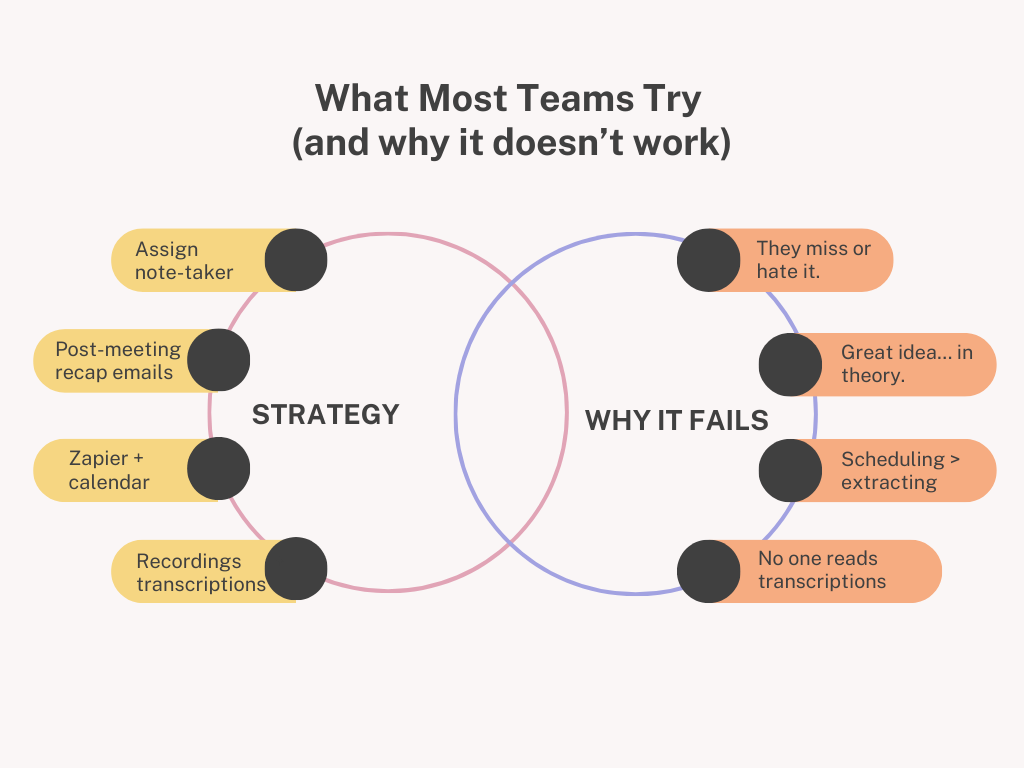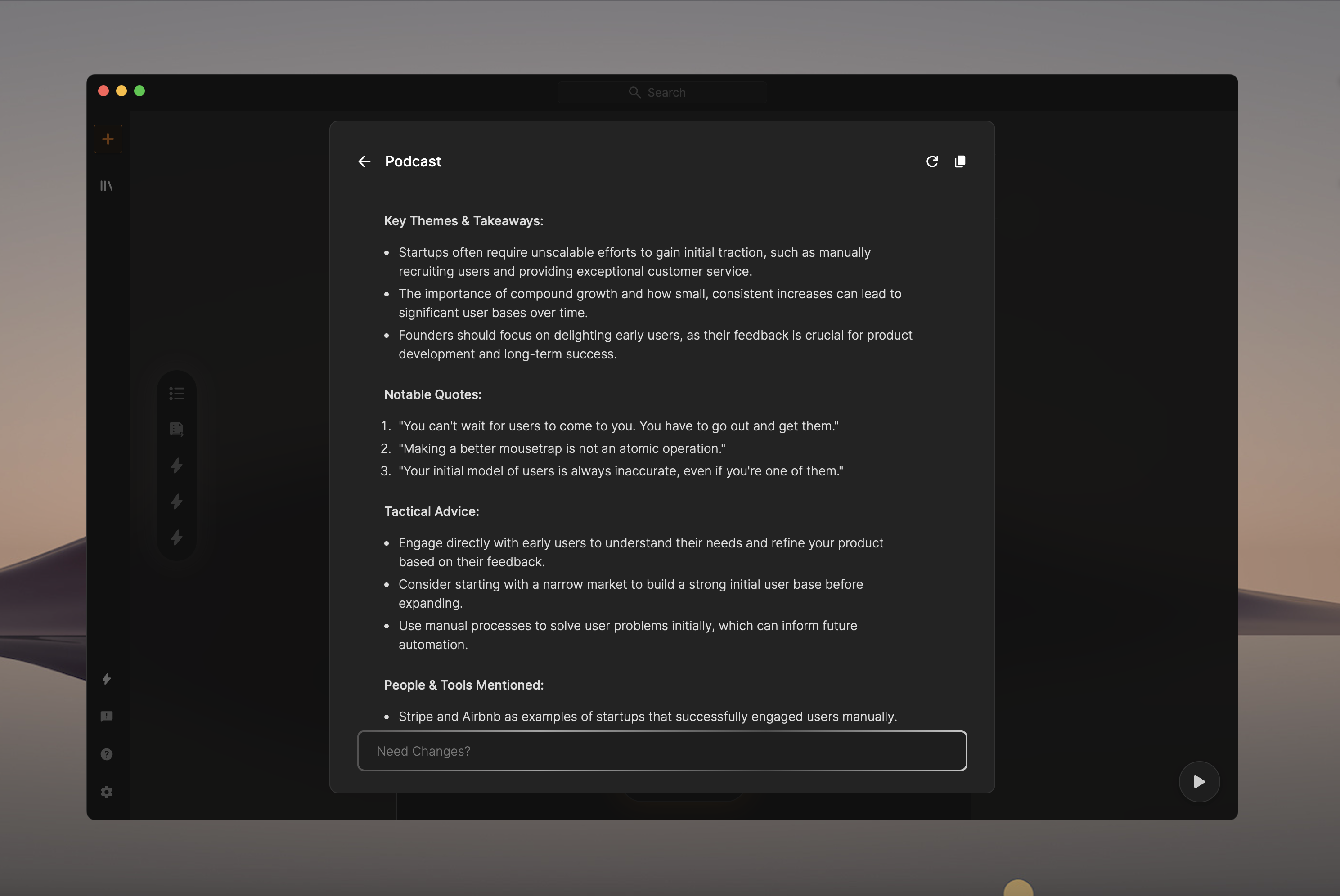Turn convos into tasks. Auto-create action items from meetings with Shadow and sync to Linear, Asana, Todoist & more.
.png)


How to turn conversation into execution—without changing how your team works
If you’ve ever left a meeting feeling like, “That was productive!”—only to realize a week later that nothing actually happened—you’re not alone.
This is one of the most common and costly problems inside fast-moving teams. You spend time talking, aligning, planning. But somewhere between “we should do this” and “this got done,” things fall apart.
The meeting ends. Everyone nods. And then… silence.
No one logs the action items. No one sets the follow-up. No one even remembers the owner by next week. You either spend the first 10 minutes of your next meeting retracing your steps, or worse, important work slips through the cracks entirely.
This is what I call the meeting → action gap.
And it’s everywhere.
Let’s say your team has a weekly sync. It could be product, marketing, sales, doesn’t matter. In that meeting:
Great. Productive. But unless someone explicitly logs those four follow-ups in your task system during the meeting—with an owner and a due date—it’s as good as forgotten.
Most teams solve this informally:
But that’s the problem: by the time it comes up again, it’s already late.
This issue compounds fast, especially across teams. What starts as one forgotten action item becomes dozens. It affects shipping velocity, cross-functional alignment, even team morale. People start double-checking each other, asking “Wasn’t this supposed to happen?”, and slowly—trust erodes.
Over the past year I’ve talked to dozens of teams trying to solve this. Here’s what they typically try first:

Rely on memory
...lol.
In the best case, maybe 50% of action items are captured. In the worst case, nothing is logged, and people just operate on recall.
This isn’t a tooling problem. It’s a memory problem.
It’s not that your team doesn’t care about follow-ups. It’s that they’re in back-to-back meetings. Their brains are full. They move fast.
And honestly? Manually writing down action items in the middle of a call shouldn’t be your team’s job.
So what if there was a way to make action item capture happen automatically without adding another tool or asking your team to change anything?
That’s what we’ve been building at Shadow.
Shadow is an AI-powered meeting assistant that turns your meetings into structured, actionable output—ready to paste into any tool your team already uses.
No integration. No dashboard. No learning curve.
Just this:
You get an instant, shareable summary you can copy, paste, and chat with:

📆 Linear
📂 Notion
📢 Slack
📆 Asana
📊 Your CRM
📧 Email
🔄 Any internal tracker or workflow
Command + C → Command + V. That’s it.
Here’s what people have told me after using Shadow for just one week:
It’s not just about saving time (though it does). It’s about reducing mental overhead.
Instead of relying on memory, or systems you have to enforce, Shadow quietly builds a habit around action. It keeps the momentum going after the meeting ends. And even during with autopilot mode.
Shadow doesn’t replace your tools. It makes them actually work—because your tasks are finally in them.
The most productive teams don’t just talk about work. They execute on what’s discussed. And they do it consistently.
But consistency doesn’t come from more meetings, or better memory. It comes from building lightweight systems that reduce friction between idea and action.
Shadow does exactly that. No dashboards. No integrations. Just clean follow-ups you can copy and ship.
If you’re tired of good meetings turning into… nothing, try Shadow.
You’ll stop losing tasks. You’ll stop guessing who’s doing what.
And you’ll start seeing your meetings actually lead somewhere.
👉 Try Shadow here
And never let another action item slip through the cracks.
